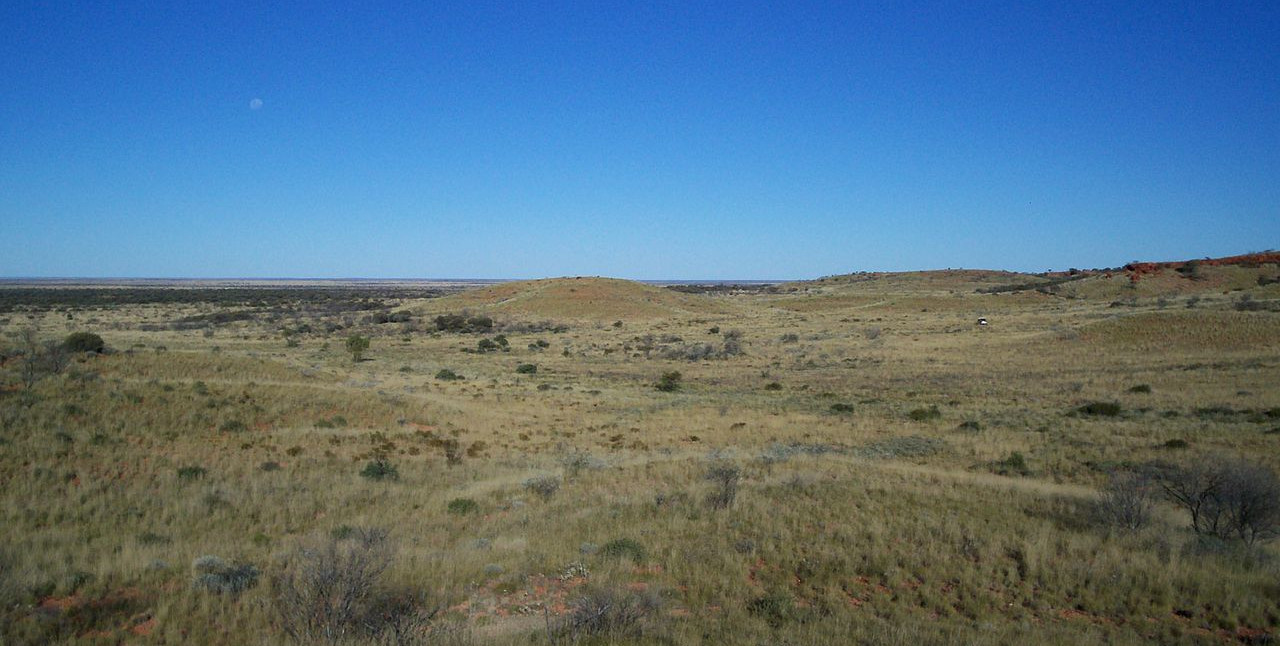
In 1977, a young woman named Robyn Davidson set out to pursue what she called a “lunatic idea” — to lead a group of camels 1,700 miles across western Australia, from the center of the continent to the Indian Ocean. In this week’s episode of the Futility Closet podcast we’ll follow Davidson’s remarkable journey alone through the Outback and learn what it taught her.
We’ll also dive into the La Brea Tar Pits and puzzle over some striking workers.
Intro:
O.E. Young of Petersburg, Va., assembled a two-story house from the marble headstones of 2,000 Union soldiers.
In 1946 Stan Bult began recording the faces of London clowns on eggshells.
Sources for our feature on Robyn Davidson:
Robyn Davidson, Tracks, 1980.
Paul Smethurst, Travel Writing and the Natural World, 1768-1840, 2012.
Robert Clarke, Travel Writing From Black Australia: Utopia, Melancholia, and Aboriginality, 2016.
Amanda Hooton, “Travels of the Heart,” Sydney Morning Herald, Feb. 8, 2014.
Robyn Davidson, “Walk My Country,” Mānoa 18:2 (Winter 2006), 7-17.
“The Inspiration: Robyn Davidson,” Australian Geographic 90 (April-June 2008), 112-112.
Dea Birkett, “The Books Interview: Robyn Davidson — Landmarks of an Accursed Art,” Independent, Aug. 4, 2001, 9.
Luke Slattery, “10 Questions: Robyn Davidson, Writer, Traveller, 59,” Australian Magazine, Oct. 13, 2012, 10.
Michele Field, “Robyn Davidson: A Literary Nomad,” Publishers Weekly 243:46 (Nov. 11, 1996), 52-53.
Cathy Pryor, “Tracks Author Robyn Davidson Reflects on a Changing Australia, 40 Years After Her Desert Trek,” ABC News, Dec. 8, 2017.
Richard Feloni, “16 Striking Photos of One Woman’s 2,835km Trek Across the Australian Outback,” Business Insider Australia, Feb. 15, 2015.
Robyn Davidson, “Tracks: The True Story Behind the Film,” Telegraph, April 19, 2014.
Duncan Campbell, “Making Tracks: Robyn Davidson’s Australian Camel Trip on the Big Screen,” Guardian, April 21, 2014.
“Indomitable Spirit,” Canberra Times, Sept. 29, 2012, 8.
Coburn Dukehart, “Rick Smolan’s Trek With Tracks, From Australian Outback to Silver Screen,” National Geographic, Sept. 19, 2014.
Brad Wetzler, “Australian Camel Odyssey: A Voyage of Self Discovery,” Kitchener-Waterloo Record, Jan. 2, 1993, E1.
Eleanor Massey, “Women Who Discovered the World,” Eureka Street 21:2 (Feb. 11, 2011), 1-2.
Mary Warner Marien, “Desert Journeys With Women Are Anything But Dry,” Christian Science Monitor, March 12, 1997.
Jennifer H. Laing and Geoffrey I. Crouch, “Lone Wolves? Isolation and Solitude Within the Frontier Travel Experience,” Geografiska Annaler, Series B, Human Geography 91:4 (December 2009), 325-342.
Gary Krist, “Ironic Journeys: Travel Writing in the Age of Tourism,” Hudson Review 45:4 (Winter 1993), 593-601.
Robert Clarke, “Travel and Celebrity Culture: An Introduction,” Postcolonial Studies 12:2 (June 2009), 145-152.
Richard Snailham, “Tracks by Robyn Davidson,” Geographical Journal 148:1 (March 1982), 116-117.
Ihab Hassan, “Australian Journeys: A Personal Essay on Spirit,” Religion & Literature 34:3 (Autumn, 2002), 75-90.
Rachael Weaver, “Adaptation and Authorial Celebrity: Robyn Davidson and the Context of John Curran’s Tracks (2013),” Adaptation 9:1 (March 2016), 12-21.
Listener mail:
Helen Lawson, “‘My Job Stinks’: The Diver Who Has to Swim Through Sewers to Unblock the Drains of Mexico City,” Daily Mail, March 23, 2013.
Michael Walsh, “It’s A Dirty Job: Meet Mexico City’S Official Sewer Diver,” New York Daily News, March 23, 2013.
Eric Hodge, Phoebe Judge, and Rebecca Martinez, “Criminal: La Brea Dave’s Deep Dive,” WUNC, Dec. 18, 2015.
Wikipedia, “La Brea Tar Pits” (accessed April 19, 2018).
“FAQs,” La Brea Tar Pits & Museum (accessed April 19, 2018).
Andrew Blankstein, “Police Find Evidence Linked to Homicide in La Brea Tar Pits,” Los Angeles Times, June 7, 2013.
Wikipedia, “Grapheme-Color Synesthesia” (accessed April 19, 2018).
Maggie Koerth-Baker, “Magnetic Letters Taught Us More Than How to Spell,” National Geographic, March 9, 2016.
“Synesthesia,” Psychology Today (accessed April 19, 2018).
Nathan Witthoft, Jonathan Winawer, and David M. Eagleman, “Prevalence of Learned Grapheme-Color Pairings in a Large Online Sample of Synesthetes,” PLOS One 10:3 (March 4, 2015), e0118996.
A.N. Rich, J.L. Bradshaw, and J.B. Mattingley, “A Systematic, Large-Scale Study of Synaesthesia: Implications for the Role of Early Experience in Lexical-Colour Associations,” Cognition 98:1 (November 2005), 53-84.
Wikipedia, “Synesthesia” (accessed April 19, 2018).
Patricia Lynne Duffy, Blue Cats and Chartreuse Kittens: How Synesthetes Color Their Worlds, 2011.
This week’s lateral thinking puzzle is from Paul Sloane and Des MacHale’s 2014 book Remarkable Lateral Thinking Puzzles.
You can listen using the player above, download this episode directly, or subscribe on iTunes or Google Play Music or via the RSS feed at http://feedpress.me/futilitycloset.
Please consider becoming a patron of Futility Closet — on our Patreon page you can pledge any amount per episode, and we’ve set up some rewards to help thank you for your support. You can also make a one-time donation on the Support Us page of the Futility Closet website.
Many thanks to Doug Ross for the music in this episode.
If you have any questions or comments you can reach us at podcast@futilitycloset.com. Thanks for listening!
